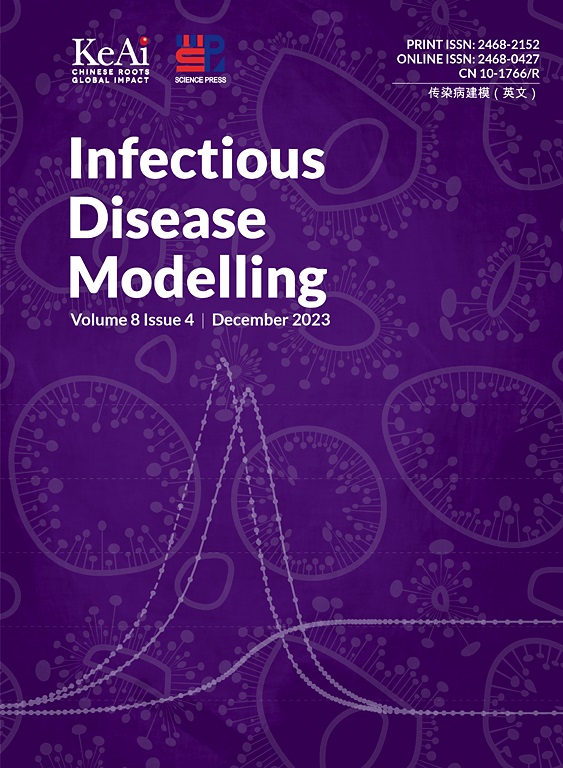Dynamics of an epidemic controlled by isolation and quarantine: A probability-based deterministic model
IF 2.5
3区 医学
Q1 Medicine
引用次数: 0
Abstract
Assuming a homogeneous population, we employ a deterministic model based on first principles of probability to explore dynamics of an epidemic controlled by isolation alone, quarantine alone, and the two together. We develop explicit closed-form equations for key metrics of control performance: cumulative fraction of population infected over the course of the epidemic (final size), maximum fraction infected at any one time, and epidemic duration. We derive an analytical solution for final size of an epidemic controlled by isolation, when final size is small, and develop empirical relations for the other cases. We frame equations in terms of reproduction numbers, measures of intervention effort and initial conditions. We model both strength and speed of interventions, assume second order gamma distributions for intervention waiting times and employ non-time-invariant equations for quarantine. We also account for quarantine of unexposed, susceptible individuals and for imperfect intervention.
隔离和检疫控制的流行病动力学:基于概率的确定性模型
假定人口是同质的,我们采用基于概率第一原理的确定性模型来探讨仅通过隔离、仅通过检疫以及两者共同控制疫情的动态。我们为控制效果的关键指标建立了明确的闭式方程:疫情过程中受感染人口的累计比例(最终规模)、任何一次受感染的最大比例以及疫情持续时间。当最终规模较小时,我们得出了通过隔离控制疫情的最终规模的解析解,并为其他情况建立了经验关系。我们用繁殖数量、干预力度和初始条件来建立方程。我们对干预的力度和速度进行建模,假设干预等待时间为二阶伽马分布,并采用非时间不变方程进行检疫。我们还考虑了未暴露的易感个体的检疫和不完全干预。
本文章由计算机程序翻译,如有差异,请以英文原文为准。
求助全文
约1分钟内获得全文
求助全文
来源期刊

Infectious Disease Modelling
Mathematics-Applied Mathematics
CiteScore
17.00
自引率
3.40%
发文量
73
审稿时长
17 weeks
期刊介绍:
Infectious Disease Modelling is an open access journal that undergoes peer-review. Its main objective is to facilitate research that combines mathematical modelling, retrieval and analysis of infection disease data, and public health decision support. The journal actively encourages original research that improves this interface, as well as review articles that highlight innovative methodologies relevant to data collection, informatics, and policy making in the field of public health.
 求助内容:
求助内容: 应助结果提醒方式:
应助结果提醒方式:


